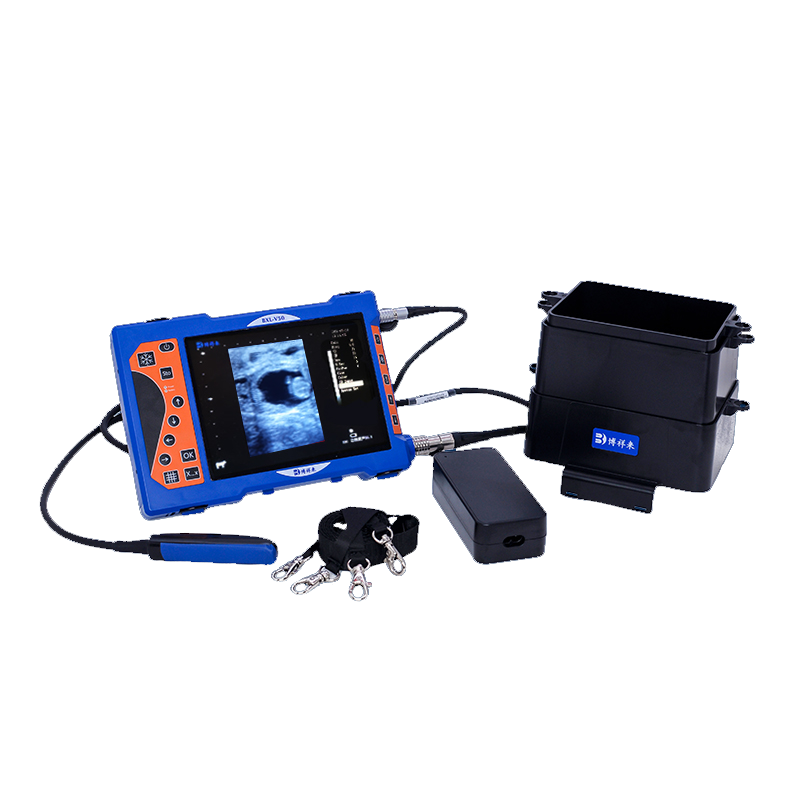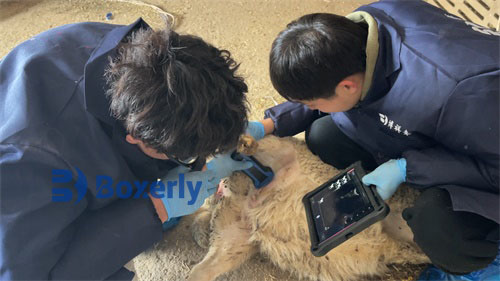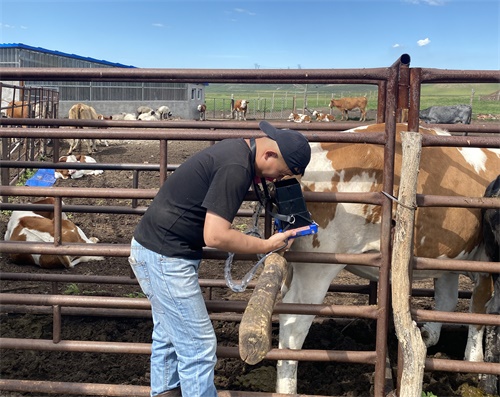The horse ultrasound machine is very useful in detecting twins and monitoring fetal health during mare pregnancy. Ultrasound is used in late stage pregnant mares with illness to determine the health status of the placenta. Transrectal ultrasound is more useful in early pregnancy, while both transrectal and transabdominal ultrasound are useful in mid to late pregnancy. In late pregnancy, transrectal ultrasound allows the operator to assess the integrity of the placenta in the cervical area, which is a potential site for ascending infection. Transabdominal ultrasound can provide a more comprehensive evaluation of the fetus and placenta, especially the area where the cow horn is connected to the body, which is prone to Nocardia infection.
Ultrasound examination using a horse ultrasound machine can display placental integrity, fetal vitality, quality/quantity of urinary bladder and amniotic fluid, and can also be used to evaluate fetal heart rate, search for twins, and confirm fetal position. The size of the fetus (and to some extent, gestational age/maturity) can be estimated by measuring the diameter of the aorta (2.2-2.5 cm for normal full-term equine fetuses) and measuring the size of the fetal eye sockets. However, it is difficult to find the fetal head in late pregnancy.

High definition B-ultrasound pregnancy tester for horses
During the late stage of pregnancy in high-risk mare, regular transabdominal ultrasound examination should be performed to detect early signs of fetal distress. It is recommended to undergo an ultrasound examination once a week until or unless abnormalities are detected, and then daily monitoring is recommended. The normal thickness of the uterus and placenta should be 0.7-1.5 centimeters, with almost no signs of separation.
The placenta will have more wavy appearance in the non pregnant cow horns, which should not be confused with placental separation. An increase in uterine placental thickness indicates placental edema or inflammation. Amniotic fluid and urinary bladder fluid should mainly be hypoechoic, with a small amount of small echogenic particles floating in them. As delivery approaches, the number of echo particles increases.
High definition ultrasound machine for horses
The fetal vitality of a mare is estimated through fetal heart rate, movement, pitch, and respiration. In an unsteaded mare, bradycardia indicates fetal stress. Severe tachycardia usually occurs before fetal death. Insufficient oxygen delivery to the fetus can lead to a loss of fetal heart rate responsiveness (i.e. the heart does not accelerate with fetal movement), followed by reduced fetal respiration, reduced fetal movement, and decreased fetal sound. A decrease in amniotic fluid volume may indicate chronic intrauterine pressure and hypoxia.
The horse ultrasound machine is a safe and non-invasive detection method. The equipment that can perform transabdominal or cardiac ultrasound examinations may be expensive, so it is not available in every private clinic. However, ultrasound examination is a common reason for referral to secondary or tertiary nursing institutions.








